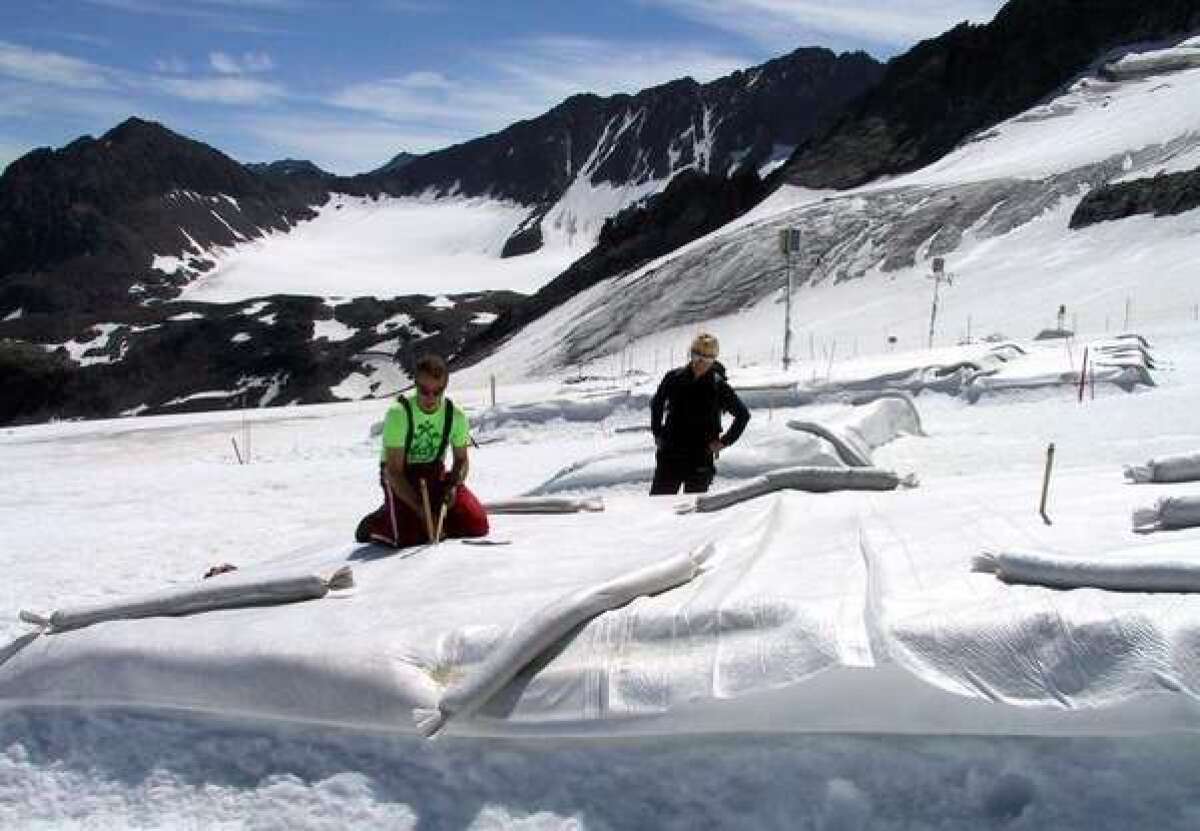Black soot forced early retreat of Alpine glaciers in the 1800s

Black soot from 19th century homes and factories in Europe hastened the end of the Little Ice Age and caused glaciers in the Alps to retreat decades sooner than they would have otherwise, according to a new study.
The black carbon particles caused the snow to absorb more heat, speeding up the melting process. As a result, the glaciers beneath the snowpack were exposed earlier in the year, giving them more time to melt. And glacial ice melts faster than snow, because it is darker.
This story line explains why Alpine glaciers began to retreat around the year 1865, even though temperatures were cooler than they had been over the previous century and there was just as much rain and snow as before. An international team of scientists connected the dots in a study published Monday by Proceedings of the National Academy of Sciences.
Black carbon was “a byproduct of industrialization,” the scientists wrote. Emissions rose “dramatically” in the mid-1800s as coal was burned to heat buildings, power steam locomotives and fuel industrial activities.
Tiny black particles rose into the atmosphere and landed on the European Alps. The scientists examined some of them by examining ice cores from glaciers at several locations in the mountains.
At Monte Rosa in the Swiss-Italian Alps, the concentration of black carbon doubled in a roughly 20-year span. Before 1850, there were about 7 micrograms of black carbon per kilogram of glacier; by 1870, there were about 14 micrograms per kilogram.
At another site in the interior Swiss Alps, levels rose from 3 to 4 micrograms per kilogram in the 1860s to about 20 micrograms per kilogram by 1880.
The researchers created a detailed model to simulate glacier behavior based on the temperature and precipitation of the late 1800s. The model’s results didn’t match up to reality -- until the effects of black carbon were factored into the mix. Without them, the Alpine glaciers would have kept growing until about 1910, they wrote.
The heat effect of black carbon “is unique in explaining the Alps glacier retreat from the [Little Ice Age] in the mid-19th century while maintaining consistency with the temperature and precipitation reconstructions,” they concluded.
Return to Science Now.







